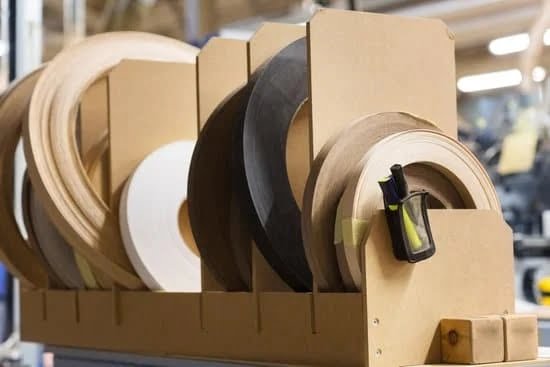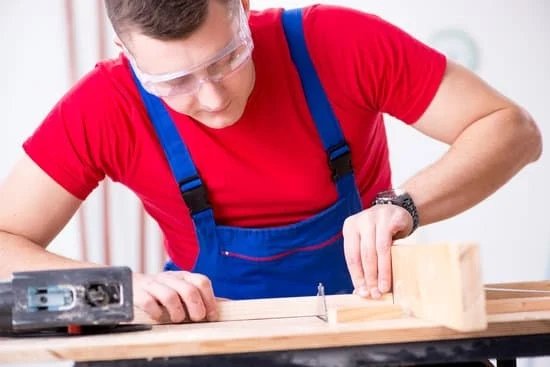Safety Tips
One of the most important tools for any woodworker is safety equipment. Personal protective equipment such as eye goggles and ear protectors should be worn at all times when working with wood, as woodworking can be dangerous. Other essential safety items such as a dust mask, work gloves, and a respirator are also necessary in order to protect the worker from sawdust and other airborne particles.
Other tools that are essential for woodworking include saws, planes, chisels and routers. A hacksaw is an especially important tool as it allows the worker to cut through larger or thicker pieces of materials which would otherwise have been difficult to cut by hand. A combination plane is a versatile tool which can make straight cuts or curves while trimming edges of material. Chisels are invaluable for making precise cuts in corners and recesses, while routers are used for shaping edges and creating rabbets or grooves in material surfaces.
It is equally important for a woodworker to understand how to use each of these tools safely in order to prevent injury or worse. Sharp blades should always be handled with care; cutting towards yourself should be avoided at all cost and both hands should always be positioned on the handlebars when using power tools. Power cords should never be wrapped around the body as this can strangulate the user if they become tangled accidently. Additionally, individuals should also ensure their workspace is kept clean and free of debris so that there isn’t anything near them which presents a danger when working with potentially hazardous machines.
Maintenance
Properly caring for woodworking tools include regularly cleaning and lubricating the moving parts and applying a protective coating or paint to prevent corrosion. Make sure to store the tools in a dry area away from extreme temperatures as temperatures could get too hot and cause harm to the metal on the tool.sharpening and honing should be done periodically, especially for saws, chisels, planes, knives and other sharp edged cutting tools. When not in use, all tools should be returned to their designated storage space. It is also important to keep only the necessary amount of tools in the working area as having too many may make it cluttered and difficult to navigate when working. Finally, inspect each tool before use to ensure they are suitable for use and make necessary adjustments as needed.
Do-it-Yourself Projects
When it comes to DIY woodworking projects, the right tools are essential for success. Basic tools like a hammer, saws, drill and clamps are a must for any job, as well as a tape measure, speed square and level. Depending on the project’s complexity, additional items can be added. For more intricate work such as cabinetry or fine furniture making, chip carving knives, chisels and router bits can all be useful. If you plan on using electrical power tools such as a band saw or drill press, you must also take proper safety precautions including but not limited to safety glasses or goggles and dust masks when appropriate. For larger projects such as wood lathes or planers, as well as a vice clamp, bench grinder or orbital sander can really come in handy. Don’t forget your necessary lumber supplies like specially treated wood screws, various sizes of nails, hinges and glues too! All these tools might seem intimidating at first but once you become familiar with their uses you’ll find them invaluable for making beautiful DIY pieces of art out of the most sustainable material around – Wood!
Power Tools
Using power tools for woodworking can save time, energy, and money. It also makes the process of crafting wood pieces much easier and more precise. Power tools such as jigsaws, routers, circular saws, table saws and abrasive cut-off saws enable a person to make accurate cuts that match their plans perfectly. Power sanders make it possible to achieve a smooth finish more quickly than when sanding with traditional hand tools. Impact drivers are incredibly useful for driving screws into hard-to-reach places or materials like concrete or metal without damaging them in the process. Lastly, drill presses provide precision drilling consistency and speed up drilling tasks exponentially in comparison to when using a manual hand drill.
Creative Ideas
Adding creativity to a woodworking project can be achieved by utilizing various colors and finishes, as well as different types of wood. For example, working with two or more types of lumber, such as pine and mahogany, in the same project will create an eye-catching contrast. Additionally, you can stain one type of wood and leave the other natural or use a paint or dye to achieve a certain look. Changing up the color of finishes can also add a unique element – for instance, try mixing up matte, satin and gloss for an interesting result. You may even want to consider unconventional ways to finish a piece like using beeswax or wax polish and buffing it with a soft cloth to bring out its natural patina. Experimenting with distressed finishes and varying degrees of distressing will also help make unique pieces. Lastly, you can use carpentry tools such as frame clamps, braces, chisels and saws to create small details that will add flare and interest to your projects.
Budget Conscious Tool Options
When it comes to woodworking, it’s important to have the right tools if you want to get your project right. However, it can be difficult to know what tools you need and which ones are worth the investment. If you’re working within a budget, there are a few suggestions that can help you save money while still finding quality products that will last a long time.
The first thing you should do when shopping for woodworking tools is to research which brands have the best reviews. Quality craftsmanship goes a long way in producing long-lasting products and can make all the difference in the outcome of the job. It’s also important to determine where you can find used tools that are still in good working condition – flea markets, online auctions and secondhand stores are some good places to explore such possibilities. Tools made of stainless steel or composite materials typically last longer compared to those made from traditional materials, so try looking for these items as well.
You may consider borrowing some larger tools from friends or family members who also engage in carpentry instead of buying them yourself ” this way, you can use them as needed without having taken up extra room for storage at home. Additionally, certain companies provide renting or renting-to-own services where equipment is available at lower prices than their buying prices ” this way, you can “try out” a tool before committing to buying it. Ultimately, it’s important to keep an open mind when selecting woodworking tools ” with a bit of research and planning ahead of time, you can find a great set that won’t break your bank account!
Best Practices
Tools Needed: Every woodworker should have the proper tools for the job, including saws (hand saws, miter saws, circular saws, band saws, table saws), drills (cordless drills, corded drills with drill presses), sanders (belt sanders, disc sanders), and router bits. A variety of measuring tools such as a framing square and calipers are also important. For finishes and glue-ups, good clothes brushes and foam brushes are helpful as well. Also essential is a good assortment of clamps varying in sizes and shapes to accomplish necessary tasks. Finally, use shop vacuums for clean-up since they are more powerful than regular vacuum cleaners.
Glossary of Terms
Chisel: A tool used to shape wood by cutting, shaving, or trimming. The blade is usually attached to a handle.
Circular Saw: A saw with a flat, flexible blade that spins around an arbor and can make long cuts in sheet materials like plywood or veneered boards.
Drill: A tool used for making holes in materials by rotating a cutting bit or other head against the material. It is often used to make screw threads.
Planer: A machine used to smooth and even out large pieces of wood, as well as reducing their thickness.
Router: A motor-driven rotary cutting tool used to shape and finish workpieces of wood or other materials. It is typically mounted on a router table so the user can adjust the depth of cut without bending down.
Sander: An electric power tool consisting of sandpaper attached either directly or indirectly to a block that rotates rapidly when powered on, enabling it to remove imperfections from surfaces such as wood or metal quickly and easily.
Miter Saw: A saw that uses a circular blade set at an angle to make accurate crosscuts across wide boards or multiple boards simultaneously with its adjustable angles feature.
Jig Saw: An electric-powered tool used for cutting curves and circles in timber and similar materials with a reciprocating blade that moves up-and-down alonga curved path guidedbya standard pattern for accuracy.

Hi everyone! I’m a woodworker and blogger, and this is my woodworking blog. In my blog, I share tips and tricks for woodworkers of all skill levels, as well as project ideas that you can try yourself.





